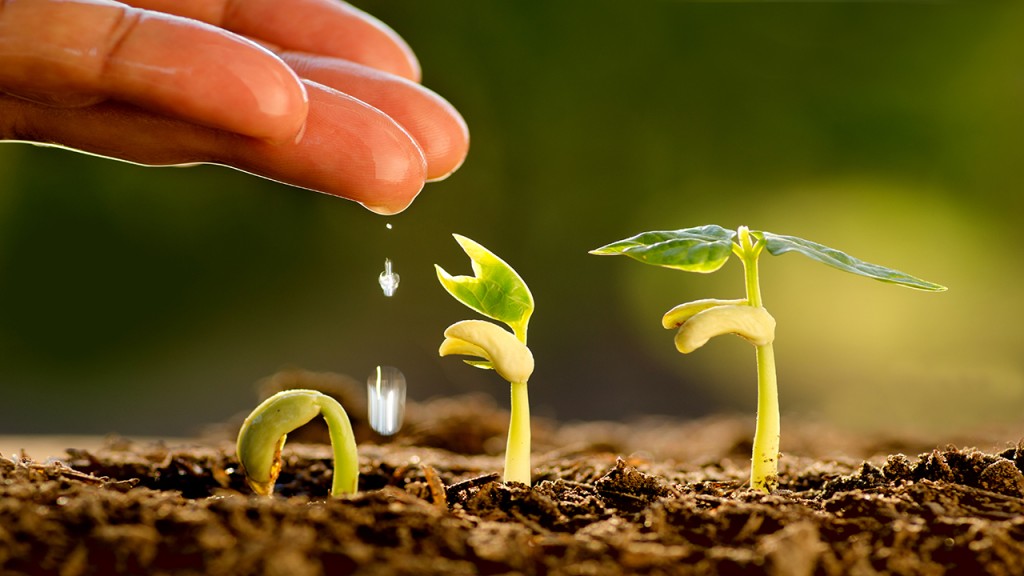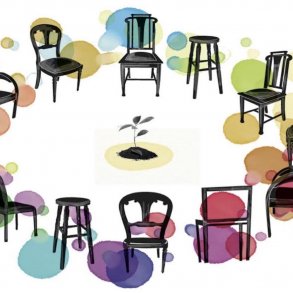Written by Lauren Tenney and published at tendirections.com

Increase transparency. Share power. Create self-managing teams. Become a learning organization.
If you’re an evolutionarily-minded leader and you want to embrace the future of work along these lines, how do you do it?
Are all self-managing systems of governance more or less the same, or are some better suited for your existing culture? Is your job to select the “best” (Most popular? Easy to understand?) approach for evolving your team or organization, and stick with it long enough to reap the rewards? (…Is Slack really all you need?)
How do we really change the way people work in meaningful ways?
While it is certainly true that changing the way we organize, make decisions, and share power will influence the way we understand and approach our work together, exterior innovations are only half of the change story—at most. Whether you’re trying to change a life habit or an organization, it’s tempting to orient to change as an exterior problem to solve. If I just do this behavior, things will improve.
Transparency, power sharing, distributed leadership and self management are all behavioral adaptations to complexity. We’ve hit upon these adaptations precisely because the current way isn’t working. But whatever the current way is—it isn’t merely what we’re doing. It’s how we’re understanding; thinking, making meaning, feeling, imagining, envisioning and identifying.
The current way is everywhere—not just in the org chart or the meeting structure. It is the inner narrative I have about what defines success. It is the hidden assumptions of workplace relationship. It is the unquestioned culture of performance. It is all parts of us—our complex inner worlds and values which are being continuously shaped and influenced by the field of meaning we co-create at work.
When we realize work isn’t working, what’s happening is that the complexity of who we are inside (and of the future we’d like to participate with) is outpacing the complexity that our work environment can handle. When we see how emergent creativity is deadened by traditional power structures, the dismay we feel is caused by the dissonance between our inner complexity and that of the organizational system. When we see the courage of real innovation diluted by competitive fear, our deflation is a key data point that the system can’t see what we see.
These moments of hitting the wall of the current way aren’t exterior indicators that something has to change. They are interior. They arise first in how we see, what we notice, what we care about, and what we identify with.
Seeing that things aren’t working can inspire change. But we don’t adapt simply because things aren’t working. We adapt because we have the ability to see an alternative possibility that stands in contrast to the inadequacy of the current way. Adapting to complexity begins inside and extends outward to create more adequate expressions of what we’ve already recognized to be true and possible.
This is why the entire change-the-structure emphasis of the work revolution is so deeply problematic. Because it takes for granted that the process of change is outside-in, and rushes to solve exterior problems that are actually only expressions of an outdated inner reality.
Bringing lasting, meaningful transformation into your organization isn’t as simple as making a structural change and sticking with it long enough. The heart of the matter, the single most important thing underpinning any brave new innovation in how we work is the inner evolution in meaning-making that enables us to adapt in the first place.
Inner evolution by another name is interior development. It means growing and changing how we see the world, what we identify with, what we value, and how much care we can extend to people who aren’t like us. Interior development is a deliberate, beautiful process that yields more capacity, complexity, and compassion throughout our lives.
Valuing inner development is itself a revolutionary thing to do because it breaks down the traditional silos of who we are and how we can be transformed at work. Instead of being asked to check portions of who we are at the door, in a developmental environment work itself is a crucible for creative evolution. In what we create, yes, and in who we are invited to become as individuals.
Those organizations that are zooming into the future in a sustainable way (not merely through some luck of circumstance and popularity) are those that have internalized a culture of evolution and development into a set of exterior practices. Chances are these practices display greater self management and power sharing, but they do so in a diversity of ways that aren’t allegiant to one ultimate methodology. In an explicitly inner-evolution oriented culture, structure isn’t a goal; it’s a byproduct of a healthy inner operating system where growth and development is what we value and who we are. (And besides—it’s worth considering how a move to flatten hierarchy can be ironically co-opted by a new hierarchy where the chosen methodology is the new king.)
Any change process worth its salt today must include an interior component that engaged developmentally with how people identify, perceive, feel, and relate to each other and to their worlds of work. If it doesn’t, it isn’t true transformation—its the acquisition of exterior change as a proxy for inner growth. The real enduring measure of a more adequate response to complexity isn’t that we look a certain way on the outside (be it self-managing or not). It’s that we stop believing that better solutions are out there and start investing in an active, creative, and ongoing participation with our development—individually, and together.
Featured-image graphic link added by Enlivening Edge




